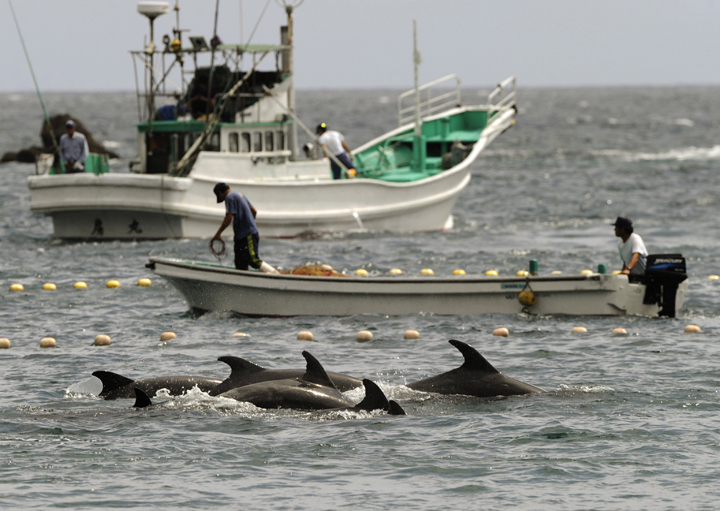The fishermen involved in the capturing of the dolphins know exactly where to position themselves to sight a pod of dolphins because dolphins have been migrating on the same path for hundreds of years, off of the coast of the Kii Peninsula.
Oikomi method
When they locate a pod of dolphins, the fishermen on their boats, also known as banger boats, will start to position themselves one behind the other and then start to lower stainless steel poles into the water. The stainless steel poles are flared out at the bottom and when the fishermen start to bang these poles with hammers, loud sounds will penetrate the waters. The fishermen bang the poles repeatedly to create a “wall of sound,” which scare the pod of dolphins. The dolphins start to swim towards the shallow cove, trying to escape, because they feel trapped behind this wall of noise.
Banger boats positioning themselves one behind the other
Once the dolphins get closer and closer to the shallow cove from being confused and have lost their way of navigation, the fishermen can seal off the cove with nets, trapping the pod of dolphins. They will then separate the dolphins that will be selected upon to sell for captive programs, butchered for meat and the lucky few that will not be selected to butcher will be released in agonizing pain and trauma from this overwhelming event. The fishermen leave the rest of the dolphins in the cove overnight.
Fishermen sealing off the cove with nets
Why are the dolphins left in the cove overnight?
The dolphins are said to be left overnight because the capture process can take up to an exruciating eight hours or longer and the fishermen are tired and want to rest up before the slaughter process. The dolphins are also in panic and shock from being captured; the fishermen want them to calm down and settle before they work with them again. Some will die over night from unbearable pain, stress or injury.


